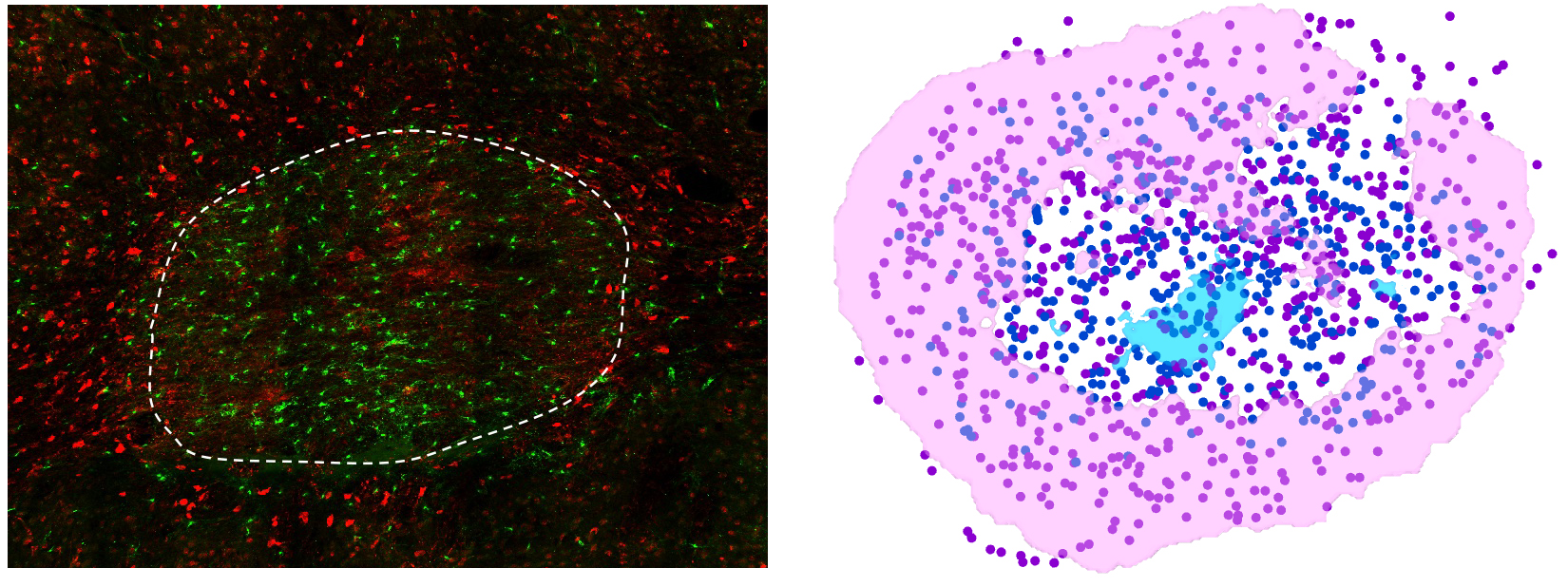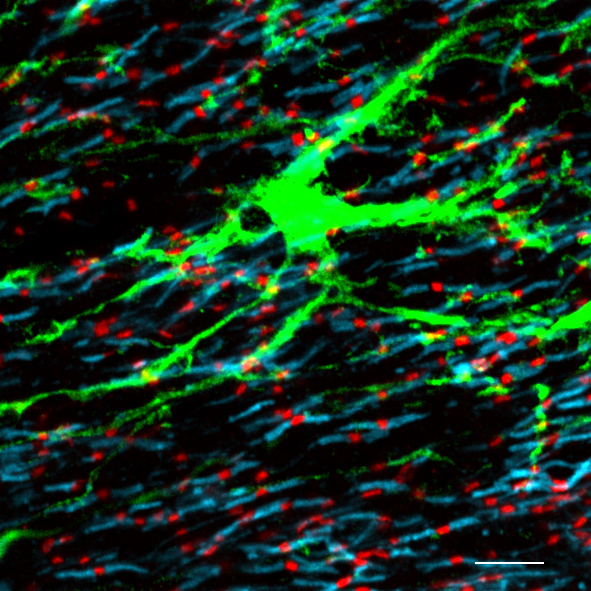Oligodendrocytes play a central role in the brain that includes accelerating neuronal transmission through myelination, trophic support to neurons and axons, and potentially a number of other, yet to be described roles. We have three projects related to oligodendrocyte biology ongoing in the lab.

Oligodendrocytes are incorrectly assumed to be a homogenous population of myelinating cells. Recent work from our lab and others has suggested there is substantial regional and even subregional variation in oligodendrocytes throughout the nervous system. We employed TRAP in a CNP-EGFP-Rpl10a transgenic mouse to characterize the transcriptional variation in oligodendrocytes in various regions of the brain and spinal cord. This analysis suggests oligodendrocytes have unique microenvironments within the nervous system and opens up a new area ripe for translation and neural repair by manipulating these microenvironments. Interestingly, a number of the gene expression networks identified by this work have links to human disease. We are actively working to establish how these links are relevant to dementia and other disorders of myelination.
These regional oligodendrocyte transcriptional data sets are available for download here (link to login download page).

Obesity is a blossoming public health crisis that dramatically accelerates the risk of white matter lesions and increases the risk of silent brain infarction. Work in the lab has shown that obesity increases resting OPC number in white matter, diminished axoglial contact at paranodes, and decreases myelin thickness. These resting changes have direct consequences on injury and repair after stroke. After a focal white matter stroke lesion in obesity, stroke-responsive OPCs are more numerous early on after stroke and their post-injury maturation within the stroke lesion is impaired. We are currently working on the transcriptional drivers of this change so that we can identify a therapeutic target to promote OPC differentiation in white matter in the setting of obesity.
Check out our recent biorxiv article: https://www.biorxiv.org/content/early/2018/05/21/283184

The focal loss of oligodendrocytes is a key feature of white matter stroke lesions. Using TRAP-seq, we are working to characterize the response of oligodendrocytes during white matter stroke progression. In particular, we are interested in oligodendrocyte cell-adhesion molecules that can bind to injured axons as a potential mechanism for axonal rescue.